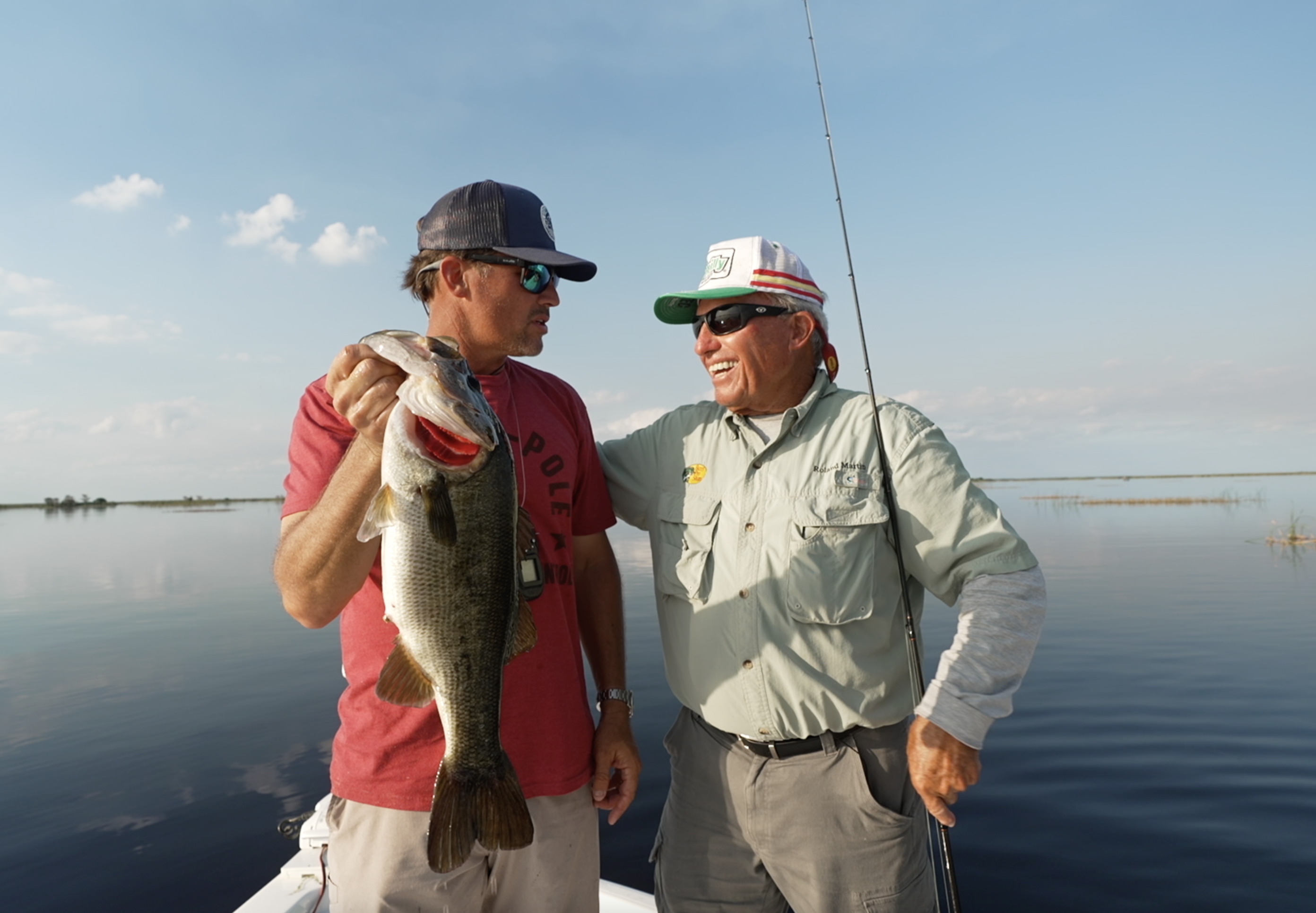
Talk about nostalgia. When Bassmaster Elite Scott Martin won the St. Croix Bassmaster Open at Lake Okeechobee presented by SEVIIN in early February, he did so at the very place where his father (legendary Bassmaster pro Roland Martin) and mother (former Bass’n Gals star Mary Ann Martin) both won significant events — at the family marina on Lake Okeechobee.
Equally endearing were Martin’s memories of guiding the Big O for 20 years. While building his professional tournament fishing career, the popular Florida pro connected countless anglers with giant Florida bass with a technique that anglers of any level can replicate — shiner fishing.
Golden shiners (Notemigonus crysoleucas), specifically, are like candy to bass. According to the U.S. Geological Survey, this forage fish species’ native range extends from Nova Scotia to South Texas and up to Wyoming and Montana. Stocked populations appear across the western U.S., up to Washington.
“Shiner fishing is really good in fall all the way through the spring in Florida,” Martin said. “Summertime isn’t bad, but it’s definitely better fall through spring; that’s when most of the big bass are coming into the shallows to spawn.
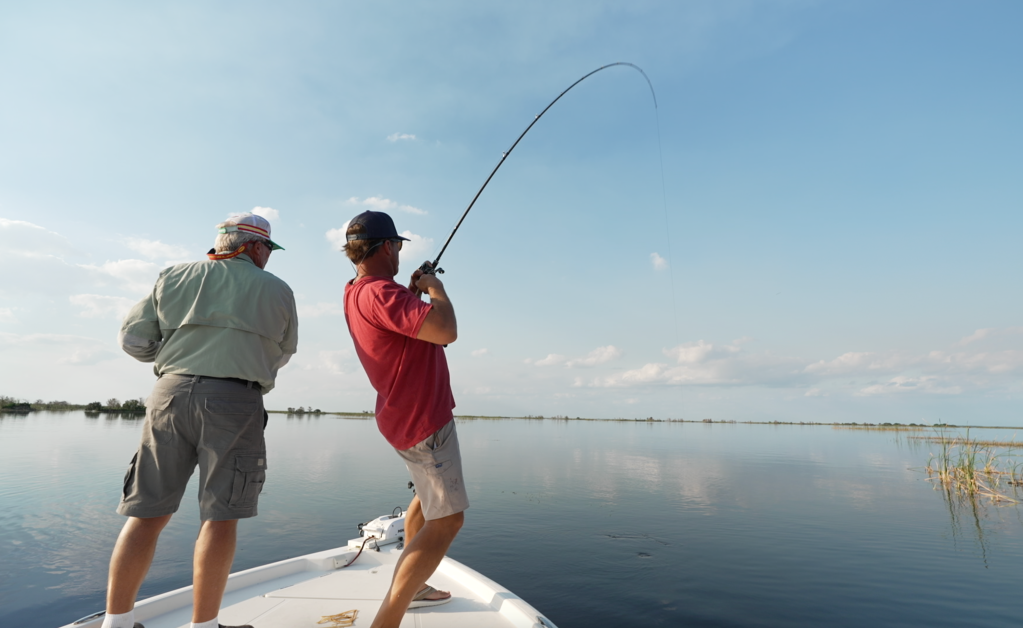
“Usually in the summertime, the fish are a little deeper, and they’re not necessarily up near the bank as much, so shiner fishing isn’t as good.”
A reliably productive technique that’ll quickly introduce the most novice angler to the ways of largemouth bass, shiner fishing works throughout any southern waters.
“It teaches you where the fish are,” Martin said of the technique’s easy-sell appeal. “You get to see firsthand how these fish use different places around the lake. It helps you understand behavior and see that some days they’re friskier than others.”
Martin offered a roundup of beginner-friendly shiner fishing tips that’ll help anglers most anywhere largemouth roam.

Where to Fish
Grass edges, lily pad edges, even docks — anywhere a big bass might lurk makes a good shiner fishing target. Spotting bass moving in and out of an area spikes the potential, but your bait’s reaction will tell you what to expect.
A steady cork and a sauntering shiner mean a safe neighborhood. Conversely, if you toss your bait into an area and the shiner immediately jumps out of the water or sprints away from the cover — you’ve found the fish.
You may have to reposition the bait a few times to give the bass time to attack, but repetitive looks at a fleeing bait redline the predator’s aggression. Chances are good that one of your casts will flip the switch and something with big jaws will yank your cork under the surface.
“I always set my boat upwind of where I want to fish and present my bait downwind,” Martin said. “I’ll literally look for that perfect spot where the wind is blowing in on something squarely. I’d rather fish that kind of spot than a great spot where I’d caught them before, but the wind is wrong.
“Shiners are expensive, and if you have to reel up and recast multiple times, that will weaken your bait. A weak or dead bait is no good, so always anchor your boat, Spot-Lock, or Power-Pole down upwind of what you’re trying to fish.”
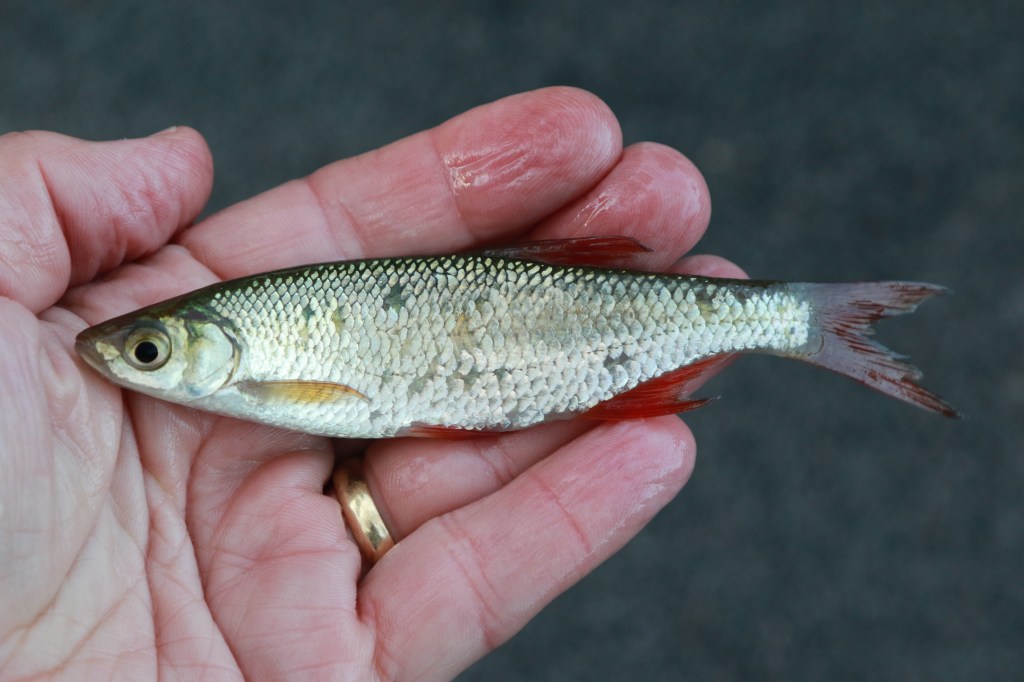
Tackle Talk
Martin suggests a 7- to 7-6 medium-heavy to heavy baitcasting outfit with 20-pound monofilament or 50-pound braided line (heavy cover). As he explained, both line choices float, while fluorocarbon sinks.
“If your line sinks, it pulls your bobber, and it puts too much pressure on the shiner, making your bait weak,” Martin said. “And if it sinks too much, you’ll snag your line on the sticks and weeds at the bottom of the lake.
“If that happens, when you reel up the line to set the hook, part of your line will be stuck underwater somewhere, and it doesn’t come tight straight to the fish as well. Monofilament floats, so it comes through the water nicely; so does braid.”
Noting that he prefers a medium-size shiner in the 6- to 6 1/2-inch range, Martin said a Kahle-style hook works best. He suggests matching hook size to your bait size: 1/0-2/0 for smaller baits, 3/0-4/0 for mediums, and 5/0-6/0 for the jumbo shiners that tempt the true giants.
“If you put too big a hook on a small bait, it will wear down the shiner quicker,” Martin said. “If your shiner loses its liveliness, it won’t be as effective.”
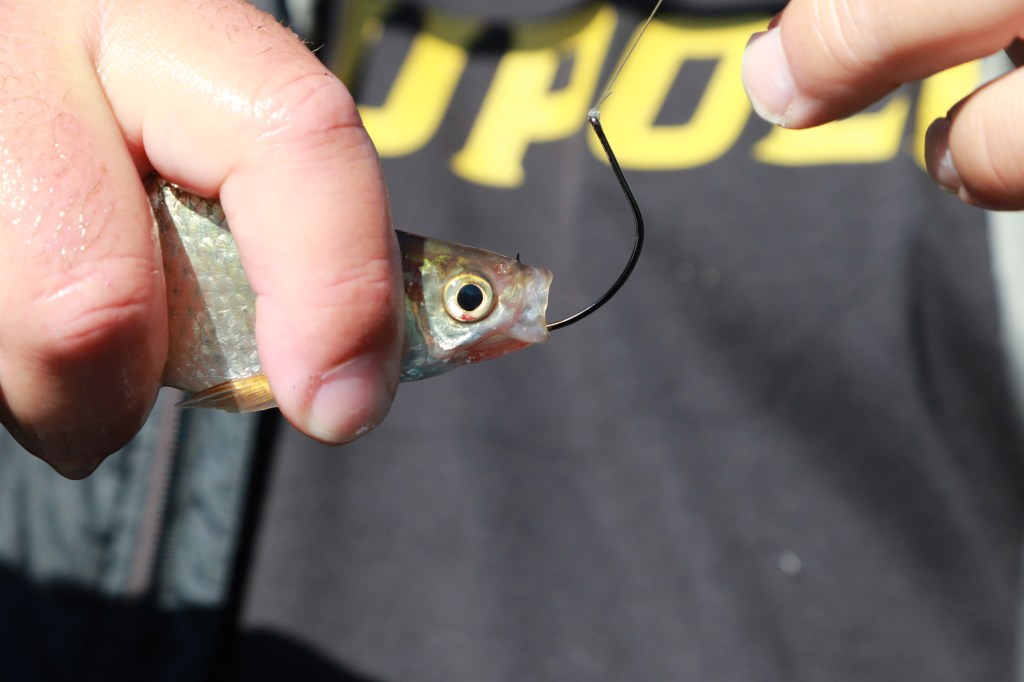
Presentation Particulars
Martin typically hooks his shiners through the lips, bottom-to-top, and warns against inserting the hook too far back and weakening the bait. His other option — hooking the shiner through the dorsal area.
“I use the dorsal option when I want the shiner to swim away from the boat,” Martin said. “For example, if you’re fishing a lot of floating hyacinth or floating vegetation, and you’re trying to get your shiner to go away from the boat and towards that cover — maybe even underneath that cover — you want to hook him in the back.
“If you hook a shiner through the nose, they will swim in circles close and swim in different directions, but typically, they will swim in the path of least resistance, kind of like you’re bridling a horse and you’re pulling on that bridle to turn. That cork is pulling on the water like you’re pulling on the reins.”
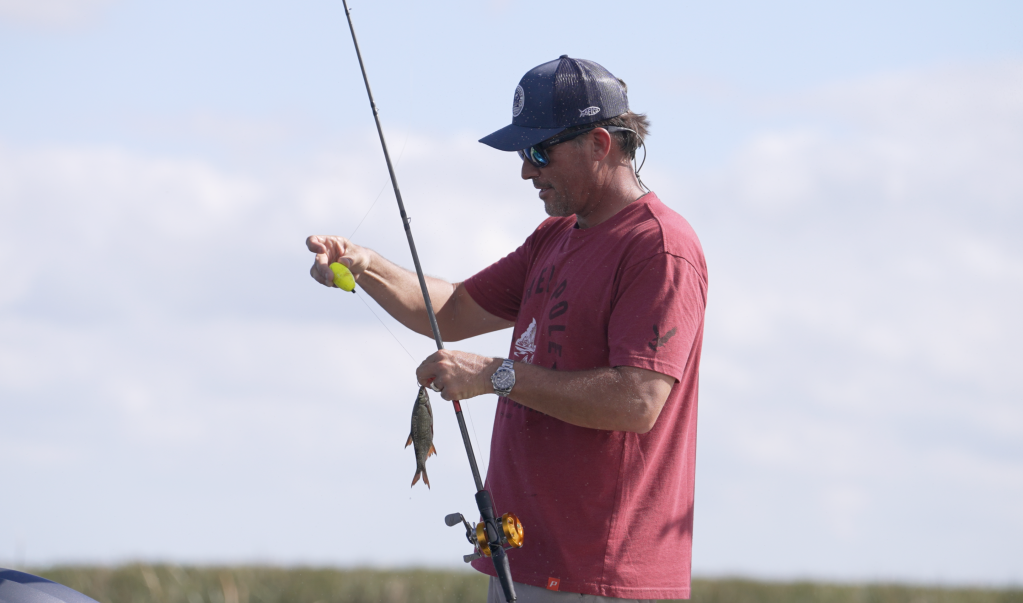
While floating shiners with a cork about 2 feet above the hook is Martin’s standard presentation, he’ll free-line his bait dorsal-hooked to get it deeper.
“Some days they eat it really fast, but you can tell when the shiner starts getting nervous by watching the cork,” Martin said. “When the shiner starts swimming harder and moving the cork around, left and right, you know something’s about to happen.
“I’ll get the rod ready, I’ll let the cork go down to let the fish eat the shiner, and once the cork goes down for about 3 seconds, I’ll reel down and get tight on the fish. It’s not a hard, fast hook set; it’s just a long, sweeping hook set to gather up a bunch of line.”

Bonus Bite
While most bait shops sell shiners, supplies can sell out quickly during the peak of the spring season. If you’re late to the counter, or if you’re fishing on a tight budget, don’t fret — catch your own.
Lily pads, reed edges, and many of the same places you might find bluegill often hold shiners; but one of the often-overlooked, yet highly productive shiner hangouts — drainage ditches. From roadside ribbons flanking farmlands to small canals routing stormwater through an apartment complex, such waterways will often yield plenty of shiners. (Always obtain permission to fish on private property.)
Light to medium spinning tackle with small hooks and round fixed bobbers will handle any shiner you encounter, while offering a sporty fight. Small pieces of earthworms will tempt any shiner in the area, but bread balls make inexpensive and highly effective bait. Sliced white bread is best, as it tends to wad tighter and grip the hook more firmly.
Also, for a super engaging option that allows kids to take part in the bait-catching process — try homemade bread balls. Same as store-bought bread, a little piece is all you need.
However you catch your shiners, keep an aerated livewell or flow-through bucket close so your baits stay healthy. A frantic, fleeing shiner really triggers those bass, so you want your baits in prime shape to put on that bite-making performance.





